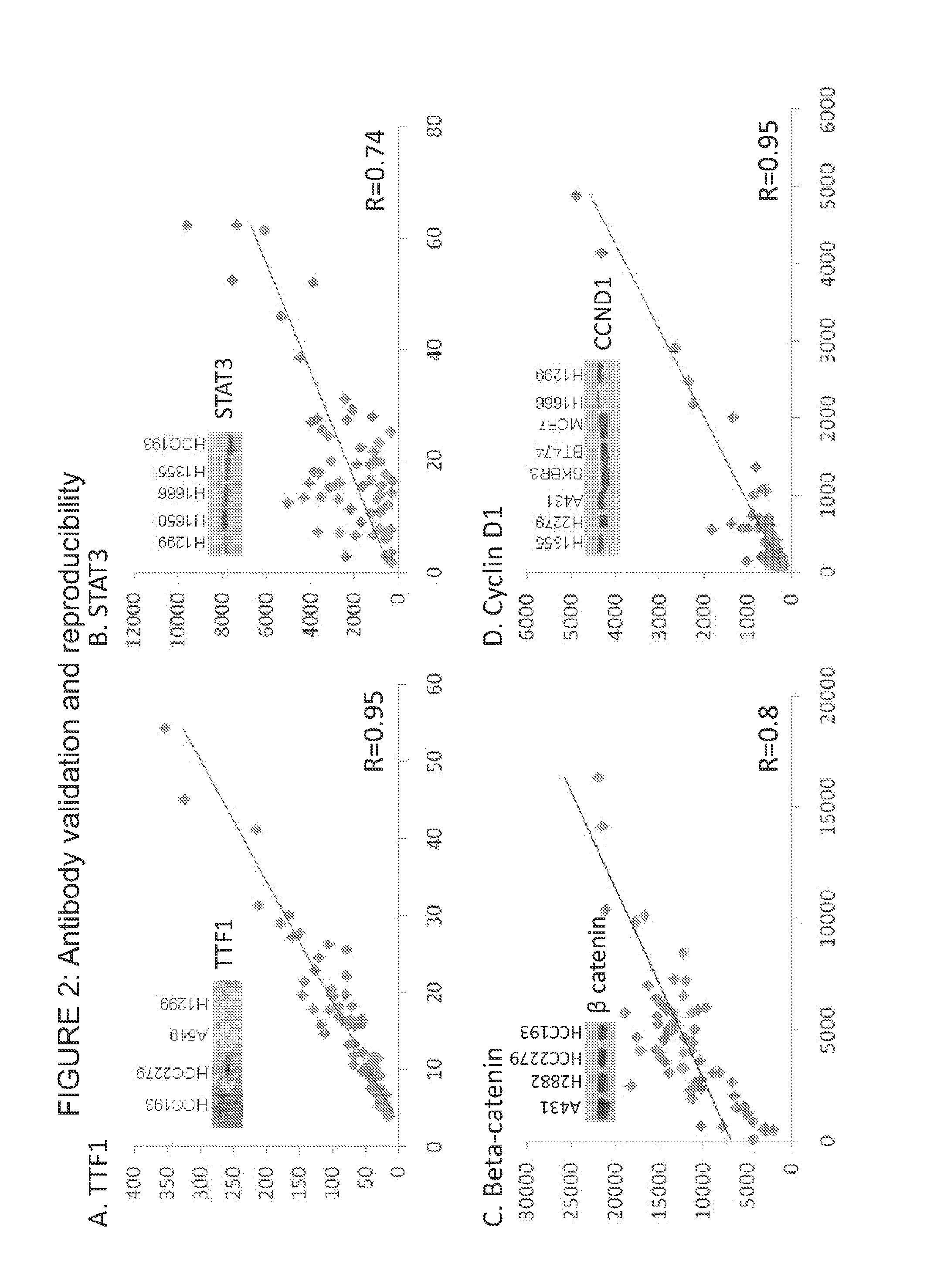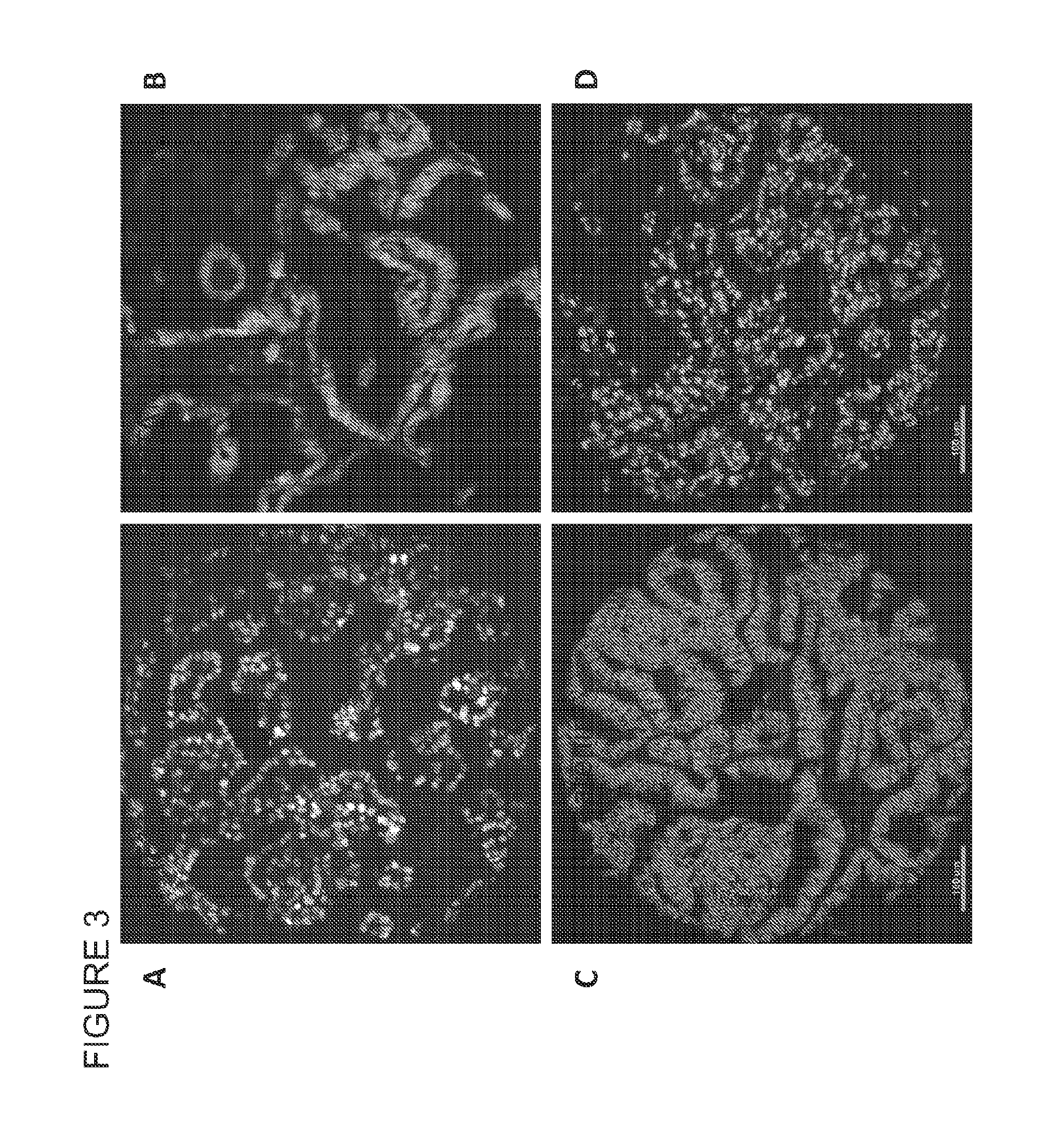Protein expression-based classifier for prediction of recurrence in adenocarcinoma
- Summary
- Abstract
- Description
- Claims
- Application Information
AI Technical Summary
Benefits of technology
Problems solved by technology
Method used
Image
Examples
Embodiment Construction
[0047]A “predetermined reference score cutpoint” associated with high risk and low risk patients refers to a cutpoint associated with dividing a group of patients into high risk and low risk patients.
[0048]The invention provides a method for making a prognosis for a patient afflicted with a type of cancer which comprises: a) determining in a sample of a tumor from the patient a level of expression for at least three biomarkers from the following group: thyroid transcription factor-1 (TTF1), signal transducer and activator of transcription-3 (STAT-3), beta-catenin and cyclin D1; b) calculating a score based on the levels of expression determined in step (a); c) correlating the score obtained in step (b) with a series of predetermined reference scores associated with a series of prognoses; so as to thereby make a prognosis for the patient.
[0049]The levels of expression of all four biomarkers, thyroid transcription factor-1 (TTF1), signal transducer and activator of transcription-3 (ST...
PUM
 Login to View More
Login to View More Abstract
Description
Claims
Application Information
 Login to View More
Login to View More - R&D
- Intellectual Property
- Life Sciences
- Materials
- Tech Scout
- Unparalleled Data Quality
- Higher Quality Content
- 60% Fewer Hallucinations
Browse by: Latest US Patents, China's latest patents, Technical Efficacy Thesaurus, Application Domain, Technology Topic, Popular Technical Reports.
© 2025 PatSnap. All rights reserved.Legal|Privacy policy|Modern Slavery Act Transparency Statement|Sitemap|About US| Contact US: help@patsnap.com



